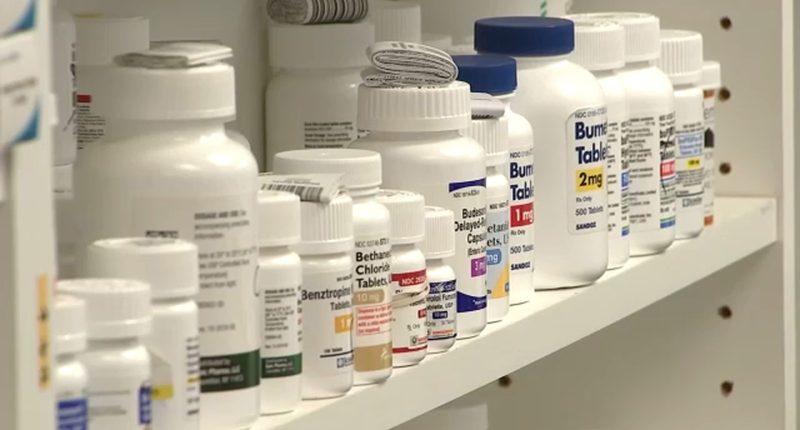Share this @internewscast.com
LOS ANGELES (KABC) — In this time of fluctuating tariff talks, many are concerned and confused about what it will cost us.
President Donald Trump put most of them on hold for now, but when it comes to paying for medications, tariffs could have some long-term consequences.
At various pharmacies, customer uncertainty is bringing worry especially for those already spending more than they can afford.
“One inhaler is $60 to $100 in order for me to get a breathing treatment,” said Lucky Goodrich of Los Angeles.
“Of course we get lots of calls, lots of inquiries and people want to know what’s going on,” said Sherri Cherman of Elements Pharmacy in Studio City.
Trump says he believes tariffs would drive drug makers to open manufacturing plants in the U.S., which would ultimately lower costs for Americans and create more jobs. Economists said the industry doesn’t work that way.
“It’s just completely different,” said Bill Padula, a scholar with the USC Schaeffer Center for Health Policy and Economics.
He said unlike other products, pharmaceutical prices are locked in with insurance companies at the start of every year.
“What pharmaceutical manufacturers may be in the position of is having to lower their price so that the price plus the tariff equals what health insurers will continue to expect as the cost of things,” he said.
The result is that drug companies will take the hit first.
But down the line, industry trade group Pharmaceutical Research and Manufacturers of America, estimated a proposed 25% tariff would boost drug prices by as much as 12.9%.
Experts say the raw ingredients for almost all medications are manufactured overseas, which means it could drive up cost even for drugs manufactured in the U.S.
“Even if there’s a 25% tariff on the drug itself being imported, the increased tariffs on active or raw ingredients that go into a drug could increase the total cost by 40%,” Padula said.
He added another potential consequence of drug makers making less profit means less money toward research and development for breakthrough treatments for cancer, Alzheimer’s and other diseases.
“So in the long run, Americans could pay by not having the availability of new innovative medications,” Padula said.
Is there a better solution? Padula said tax credits for drug makers have worked before. One example is the 1980s Orphan Drug Act which he said helped reduce costs and incentivize innovation.
“We saw instantaneous responses from the pharmaceutical industry trying to find ways to take existing drugs and create new indications for them,” he said.
But tax credit legislation on a federal level takes a very long time to pass, so Padula said local action would be faster.
“These credits could be deployed at the state level and incentivize manufacturers coming back to certain states,” Padula said.
At the cash register, Cherman said worry has prompted some customers to get as many prescriptions filled as possible, but she tells her customers change will be slow.
“I feel like there’s going to be a lot of negotiation between the drug industry and the government before we finally see what might happen,” she said.
Copyright © 2025 KABC Television, LLC. All rights reserved.















